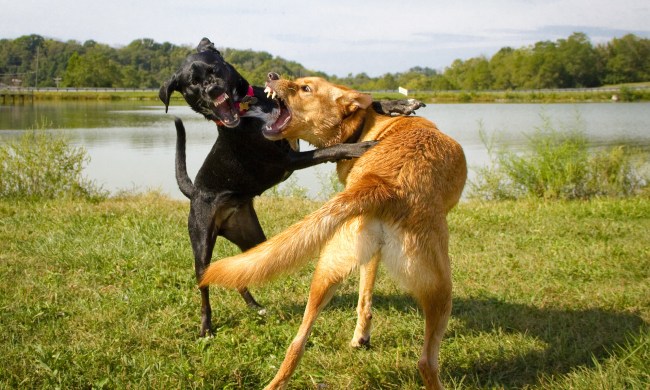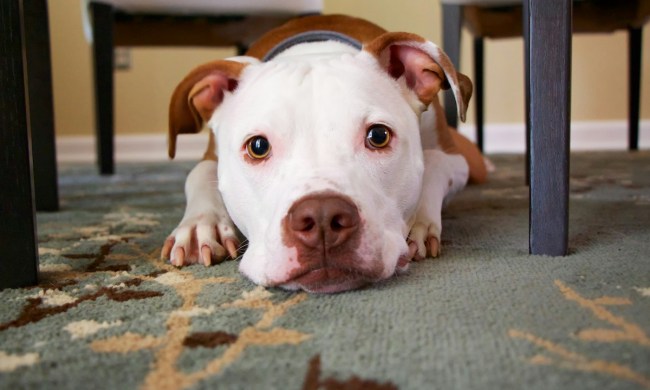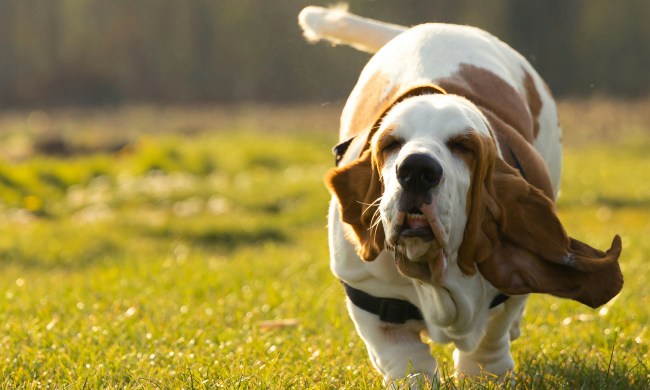As much as we treat our dogs like family members, there are times when they remind us in no uncertain terms that they are, indeed, animals. If your dog is growling, snarling, or baring his teeth whenever you come near his favorite possession or person, you’ve been reminded.
For the record, he’s exhibiting a behavior known as resource guarding, an instinctively protective response dogs use to keep others away from those things they consider valuable. This can be anything from their food bowl or favorite toy to a specific person or place to sleep. Although this can be disheartening at the very least, it’s not uncommon. Here’s how experts recommend you stop it.
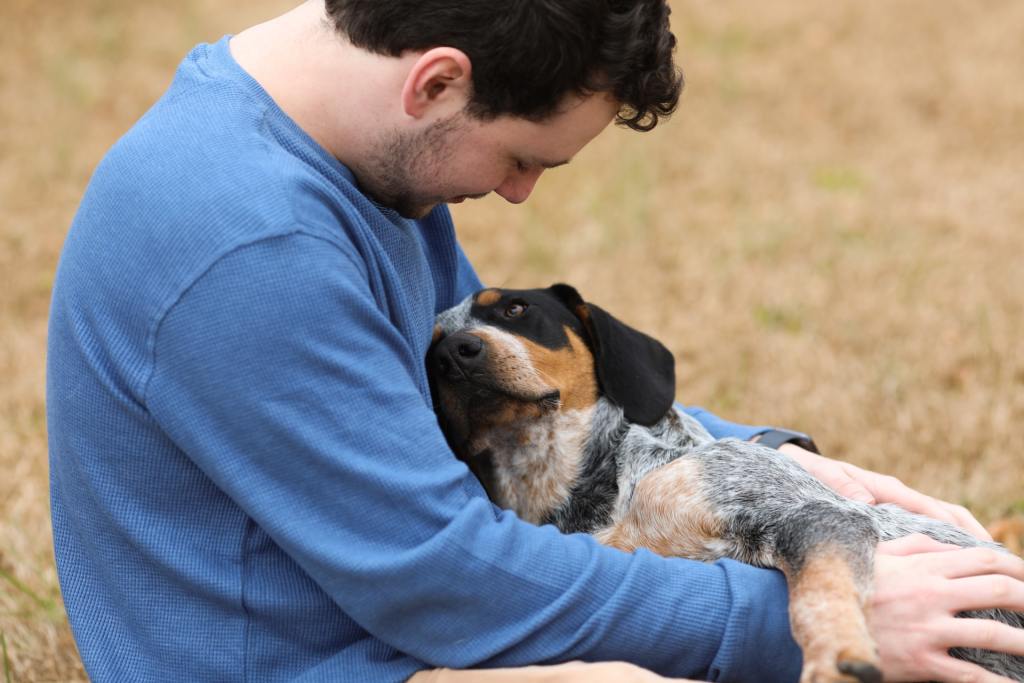
What causes this behavior?
“Guarding is actually an incredibly natural thing for dogs,” Ali Smith, founder of Rebarkable, says. “Dogs will guard things they find valuable or are worried will run out, but the approach [for stopping it] depends on what it is.”
Smith, who moved from just outside London, England, to Maryland, champions force-free training methods and is passionate about helping her clients understand their dog so the pups are more capable of being a confident and adaptable family member.
Tips for stopping excessive guarding
Although guarding is instinctive, it’s important to teach your pup how to mind his manners to keep him from becoming too aggressive.
Start training when they are young
Dr. Heather Venkat, a companion animal veterinarian since 2013, lifelong pet owner, and consultant/writer for VIP Puppies, recommends pet parents begin working with their dogs when they are puppies to prevent excessive guarding behavior.
“Dogs may excessively guard because whenever someone approaches, their resource is taken away,” she says, “so pet parents should not always approach their dog just to take away their toy, chew bone, or food. They should pet their dog or touch their bowl or toy and reward him/her for being calm.”
Discourage the habit at the onset
Venkat said once a dog realizes its growling, snapping, or barking keeps humans and other animals away from their valuables, they will continue the behavior, so begin corrective measures as soon as this tendency becomes apparent.
This is especially true if your dog is exceptionally protective of one person in the family. While it might seem cute to have your small lapdog growl and snap at anyone who tries to sit beside you on the couch, it’s important for him to learn that behavior is not acceptable:
- Encourage your dog to form positive relationships with other humans.
- Create clear boundaries by teaching him to stay off the furniture or removing him from your lap and calmly setting him on the floor when the guarding behavior begins.
- Invest in obedience training and practice asking your dog to follow the commands so he develops a healthy respect for you.
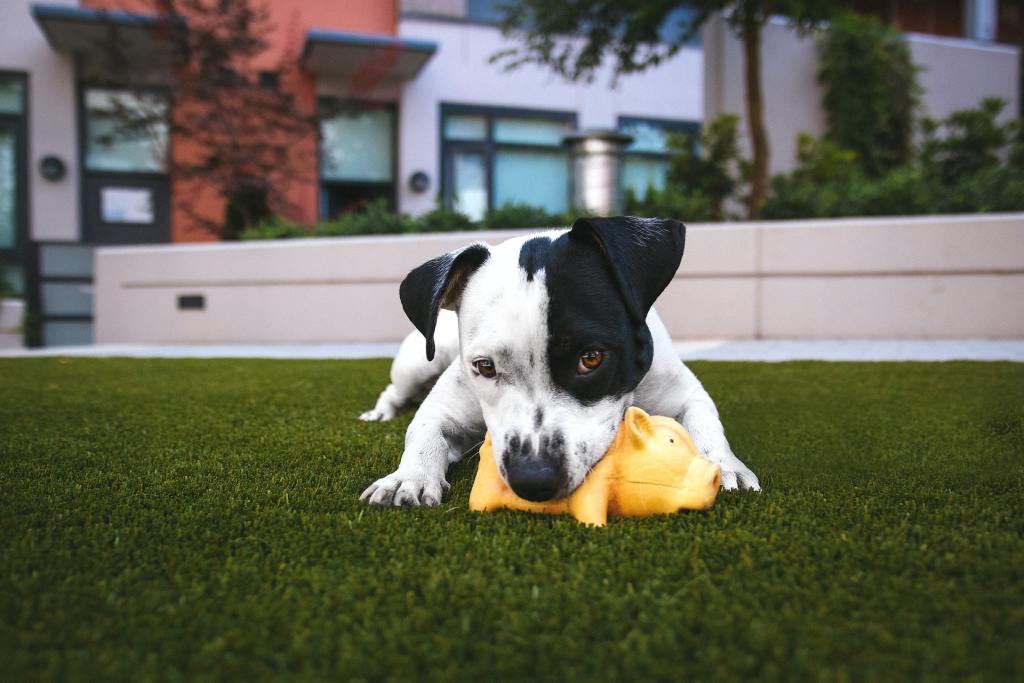
Redirect the behavior
Sometimes changing this behavior is as simple as managing the situation in which your dog exhibits guarding tendencies.
For example, Smith says, if there are multiple dogs in the family and one guards their dinner bowl from the others, the suggestion is to feed the dogs in separate rooms.
If your dog guards the bed from your partner, she recommends a twofold solution that includes working to improve the relationship between your dog and your partner and creating a space for your dog that is not your bed.
If you notice guarding behavior while your dog is playing with a toy or chewing on his favorite bone, call him into another room and reward his obedience with a treat or a different toy. Then, calmly return to the first room and remove the object he was guarding.
“That may feel like you’re not training, but management is a huge part of training,” Smith says.
Work with a professional trainer
Of course, if your dog has threatened or bitten another person or family pet, it’s time to get professional help. Venkat recommends working with a professional dog trainer or veterinary behaviorist who can prescribe a clear treatment regimen of both behavior modification and sometimes even supplements or medication.
Remain calm and be consistent
Last but not least, remember that your attitude is an important part of changing your dog’s excessive guarding behavior. Practice positive reinforcement with this and other behavior modification practices. Using force can amplify any feelings of fear or frustration your dog may be feeling, which is exactly the behavior you’re trying to avoid. Be firm, show leadership, and create a safe, loving environment for your dog.
“The most important thing is for pet parents to remain calm, be consistent, and be patient while working through their dog’s excessive guarding issue,” Venkat says.
